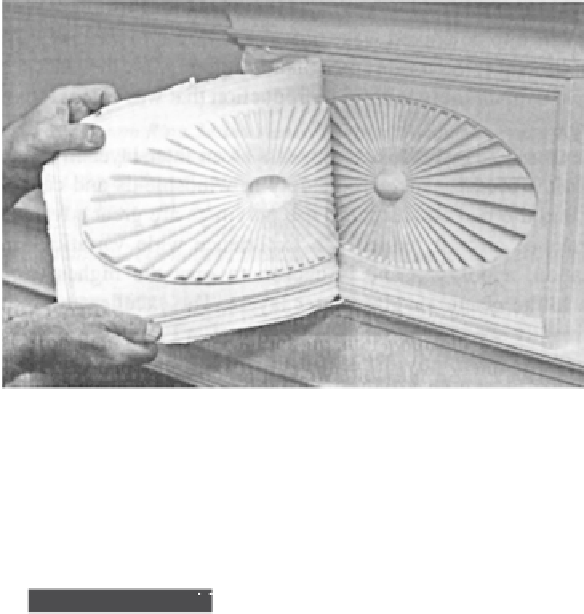Chemistry Reference
In-Depth Information
Figure 10.6:
A polysiloxane Room-Temperature Vulcanizate (RTV) being used to make a mold of an
intricately carved surface. The photograph was provided by the Dow Corning Corporation
of Midland, MI.
PDMS
PDMS
Si
PDMS
PDMS
Au
Figure 10.7:
Steps in soft lithography. The PDMS in the beginning sketch is first cross linked, then
removed, and then coated with a thiol that transfers the original pattern to a gold layer.
master), (ii) ease of cross linking at ambient temperatures (to make the
features of the stamp permanent), (iii) superb elasticity and robustness
(for removing the PDMS stamp and using it in microcontact printing),
and (iv) excellent stability (for long-term storage of patterns).
Mention should be made of the use of polysiloxanes in the area of mi-
crofluidics.
22,26
Devices of this type have channels or capillaries with di-
mensions 10-10,000 µm, and their preparation is relatively straightforward
with PDMS, using the soft-lithography techniques just described to make
the required molds.


































































































